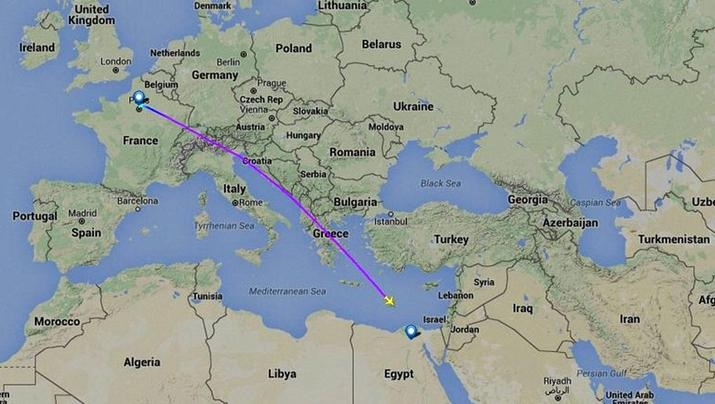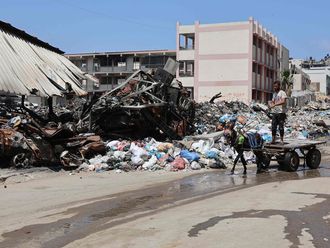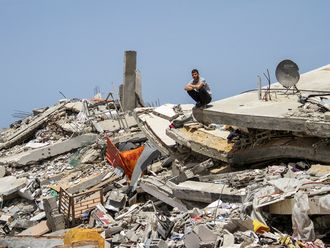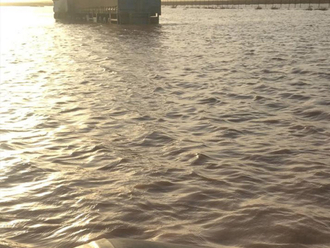
A search is under way in the eastern Mediterranean for EgyptAir flight MS804, which disappeared from radar on Thursday morning. The Egyptian prime minister has said it is too early to rule out any explanation for the incident, including terrorism.
Greece issues timeline
Greece’s civil aviation department has issued this timeline on MS804’s last moments and attempts to reach it:
02:24: EgyptAir flight 804 from Paris to Cairo enters Greek airspace, air traffic controller permissions it for the remainder of its course.
02:48: The flight is transferred to the next air traffic control sector and is cleared for exit from Greek airspace. “The pilot was in good spirits and thanked the controller in Greek.”
03:27: Athens air traffic control tries to contact the aircraft to convey information on the switch of communications and control from Athens to Cairo air traffic. In spite of repeated calls, the aircraft does not respond, whereupon the air traffic controller calls the distress frequency, without a response from the aircraft.
03:29: It is above the exit point (from Greek airspace).
UPDATE More than 8 merchant ships have already joined the #MS804 sea search operations https://t.co/m4tdeZEun3 pic.twitter.com/RkHRVf43LM— AIRLIVE (@airlivenet) May 19, 2016
03:39:40: The aircraft signal is lost. Immediately the assistance of radars of the Hellenic Air Force is requested to detect the target, without result.
03:45: The processes of search and rescue are initiated, simultaneously informing the Flight Information Region of Cairo.
Do we know what happened to it?
The aircraft was about 280km from the Egyptian coast when it disappeared, travelling at an altitude of 37,000ft. Initial reports were that no distress call had been issued, but EgyptAir later said it had received an emergency signal from the plane at about 4.26am, two hours after the last radar contact.
Reuters cited a Greek defence ministry source who said authorities were investigating reports from the captain of a merchant ship of “a flame in the sky” around 200 kilometres south of the Greek island of Karpathos.
Egypt says military search and rescue teams have been dispatched to the site where the plane vanished from radars. Greece also has sent one C-130 Hercules and one early warning aircraft. One Greek frigate is also in the area and helicopters are on standby on Karpathos for potential rescue or recovery operations.
Who was on board?
The plane was carrying 56 passengers and 10 crew: two cockpit crew, five cabin crew and three security personnel. The airline said two babies and one child were on board.
The nationalities of the passengers were as follows: 30 Egyptians, 15 French citizens, two Iraqis and one person each from Britain, Belgium, Sudan, Chad, Canada, Kuwait, Saudi Arabia, Portugal and Algeria.
What kind of aircraft was it?
An Airbus A320 – considered a safe and reliable plane. Nonetheless the model has been involved in safety incidents in the recent past, including the Germanwings tragedy in March 2015 that claimed 150 lives. It was also the aircraft Chesley Sullenberger landed on the Hudson river in 2009.
EgyptAir said the captain had 6,275 flying hours, including 2,101 on the A320; the copilot had 2,766. The plane was manufactured in 2003.
Airbus said it was aware of the report about the plane but otherwise made no comment.
Is there any suggestion of foul play?
Not at this stage. The aircraft passed through airports in Tunisia and Eritrea in the four journeys it made on Wednesday before the Paris-Cairo flight, but no warning flags were raised. EgyptAir’s vice-chairman Ahmad Abdul said there were “no reported snags” from the crew in Cairo or Paris, nor was there any special cargo or notification of dangerous goods on board.
The area of the Mediterranean where the plane went missing is heavily trafficked and much monitored, within reach of British listening posts in Cyprus, close to Israel and near to the US Sixth Fleet.
What are the next steps to revealing the aircraft’s fate?
Search and rescue teams will be tracing the emergency beacon apparently emitted by the aircraft at about 4.26am. Should that lead them to a crash site the crews will need to recover the aircraft’s two black box flight recorders.
The water in that section of the Mediterranean can be 2,000 metres deep. The equipment involved in the search for MH370 is able to search depths of at least 6,000 metres.
A cockpit voice recorder, which tapes what the pilots say, and a flight data recorder, which stores some of the 2,500 technical measurements in a modern aircraft, are located at the back of the plane and wrapped in titanium or stainless steel, to best survive a crash. They are able to withstand one hour of 1,100 degrees Celsius heat and weight of up to 227kg. The boxes can take years to be found – two years in the case of Air France flight 447, which disappeared in 2009 in the Atlantic.












